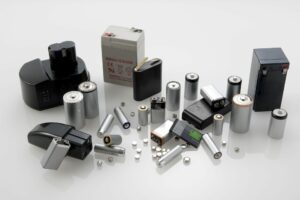Batteries and accumulators


The collection of batteries and accumulators is through the collection system ecobatterien.
Battery electrodes are frequently made out of metal or metal compounds as lead, cadmium, nickel or quicksilver, which are dangerous for the environment and highly toxic for the human body. Acids from vehicle batteries and brines from emergency batteries are highly caustic. Lithium batteries can overheat or even explode. Consider the security information.
If possible use appliances without batteries as for instance appliances with solar cells. Use rechargeable batteries (Ni-Mh; Lithiumaccumulators).
Consider the information on www.shop-green.lu.
Dry batteries undergo chemical treatment in a special installation to retrieve zinc, iron and manganese salts. Lead accumulators are distillated. Lead and iron, nickel ans plastics are made available to the industry as raw material. Accumulator acids and brines are neutralized. Mercury batteries, NiCd and NiMh are also covered in specific installations. Nickel, cadium and mercury are also recovered.
IMPORTANT ! Not in the household waste !


Batteries and accumulators

The collection of batteries and accumulators is through the collection system ecobatterien.
Battery electrodes are frequently made out of metal or metal compounds as lead, cadmium, nickel or quicksilver, which are dangerous for the environment and highly toxic for the human body. Acids from vehicle batteries and brines from emergency batteries are highly caustic. Lithium batteries can overheat or even explode. Consider the security information.
If possible use appliances without batteries as for instance appliances with solar cells. Use rechargeable batteries (Ni-Mh; Lithiumaccumulators).
Consider the information on www.shop-green.lu.
Dry batteries undergo chemical treatment in a special installation to retrieve zinc, iron and manganese salts. Lead accumulators are distillated. Lead and iron, nickel ans plastics are made available to the industry as raw material. Accumulator acids and brines are neutralized. Mercury batteries, NiCd and NiMh are also covered in specific installations. Nickel, cadium and mercury are also recovered.
IMPORTANT ! Not in the household waste !








